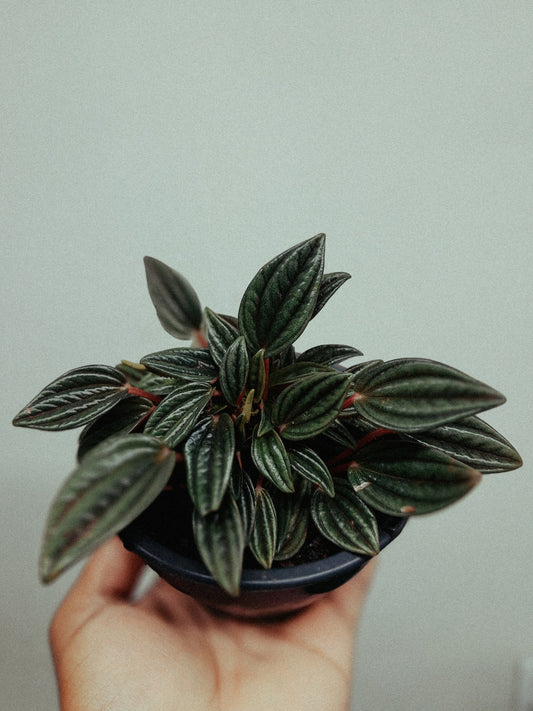Hey there, fellow plant enthusiast! If you're reading this article, you're probably curious about how to properly care for your Pothos Cebu Blue, or maybe you're considering adding this gorgeous plant to your ever-growing collection. Either way, you've come to the right place! In this guide, we'll dive into everything you need to know about Pothos Cebu Blue care. From lighting and watering to pruning and pest control, we've got you covered.
What's So Special About Pothos Cebu Blue?
Pothos Cebu Blue, scientifically known as Epipremnum pinnatum, hails from the lush tropical rainforests of the Philippines. This stunning plant is a vining beauty that boasts unique silvery-blue leaves, giving it an almost otherworldly appearance. With its low maintenance requirements, it's no wonder plant lovers are head over heels for this eye-catching gem.
Getting to Know Your Cebu Blue
Cebu Blue is an evergreen plant that loves to climb and trail, reaching lengths of 10 feet or more if you let it. The heart-shaped leaves display a breathtaking blue-green hue with a metallic sheen that's hard to resist. As your plant matures, you may notice fenestrations, or natural holes, forming in the leaves, adding even more charm to its overall appeal.
Let There Be (Indirect) Light!
One of the most important factors in keeping your Cebu Blue happy and healthy is providing the right amount of light. Remember, this plant comes from the tropics, so it loves bright, indirect sunlight. Placing it near a north- or east-facing window is perfect for giving it the light it needs without risking sunburn or faded leaves.
Don't have a suitable window? No worries! You can always use artificial light, like fluorescent or LED grow lights, to keep your Cebu Blue thriving. Just make sure the light is close to the plant and set a timer for around 12 hours per day.
Let's Talk Watering
Caring for your Cebu Blue means finding the sweet spot between too much and too little water. This plant likes to dry out slightly between waterings, so once every 1-2 weeks should do the trick, depending on your environment and the time of year.
Over-watering can lead to root rot, a common issue with Pothos plants. To prevent this, make sure your soil drains well and that you're not watering too frequently. On the flip side, under-watering can cause the leaves to wilt or turn yellow. Keep an eye on your plant and adjust your watering schedule accordingly.
Soil Matters
The right soil can make all the difference in your Cebu Blue's wellbeing. This plant thrives in well-draining soil, so a mix of potting soil, perlite, and peat moss or coconut coir should do the trick. Proper drainage is key to avoiding root rot, so ensure your pot has drainage holes and that the soil mix allows excess water to escape. As for soil pH, slightly acidic to neutral soil (pH 6.0-7.0) is ideal.
Feeling Hot, Hot, Hot (and Humid)
Cebu Blue Pothos loves temperatures between 65-85°F (18-29°C) and high humidity levels (50-70%). To achieve that tropical vibe, avoid placing your plant near drafts or sudden temperature fluctuations. If your home's humidity levels are low, consider using a humidifier or placing your plant on a tray with pebbles and water to create a more comfortable environment.
Feed Me, Seymour! (Fertilizer Talk)
Feeding your Cebu Blue the right nutrients is essential for its growth and overall health. Choose a balanced, water-soluble fertilizer with an N-P-K ratio of 20-20-20 or similar. During the growing season (spring and summer), fertilize your plant every 4-6 weeks. In the fall and winter, you can cut back to once every 2-3 months.
A Snip Here, A Snip There: Pothos Cebu Blue Pruning & Propagation
Regular pruning helps maintain your Cebu Blue's shape and encourages bushier growth. Plus, it's a great opportunity to remove any yellow or damaged leaves. But don't toss those trimmings just yet! Cebu Blue Pothos is super easy to propagate through stem cuttings. Just take a cutting with at least one node and place it in water or moist soil. In a few weeks, you should see roots developing, and voilà – you've got a brand-new plant!
Cebu Blue Pest Patrol & Disease Defense
Like any other plant, your Cebu Blue can fall victim to pests like spider mites, mealybugs, and scale insects. Keep a close eye on your plant for any signs of infestation and treat it with insecticidal soap or neem oil if needed.
As for diseases, root rot from over-watering is the most common issue affecting Pothos plants. Ensuring proper drainage and avoiding over-watering can help prevent this problem.
Let's Wrap It Up!
Caring for a Pothos Cebu Blue is a rewarding experience, and it's easier than you might think! By providing the right light, water, soil, and temperature conditions, you can enjoy the captivating beauty of this tropical plant in your home. So go ahead and add this stunner to your collection – you won't regret it!
FAQs
-
Is Pothos Cebu Blue toxic to pets? Yes, unfortunately, Cebu Blue Pothos is toxic to cats and dogs. Make sure to keep the plant out of reach of your furry friends to prevent any accidents.
-
How fast does Cebu Blue Pothos grow? Under optimal conditions, Cebu Blue Pothos has a moderate growth rate and can grow several feet per year. With proper care, your plant will be a showstopper in no time!
-
Why are the leaves on my Cebu Blue turning yellow? Yellow leaves can be a sign of over-watering, under-watering, or nutrient deficiencies. Check your watering schedule, soil conditions, and fertilizer application to pinpoint the cause and make any necessary adjustments.
-
Can Cebu Blue Pothos grow in water? Yes, Cebu Blue Pothos can be grown in water, but it may not thrive as well as it would in soil over time. Make sure to change the water regularly to prevent stagnation and provide essential nutrients.
-
How often should I repot my Cebu Blue Pothos? It's a good idea to repot your Cebu Blue Pothos every 1-2 years or when the plant becomes root-bound. Repotting provides fresh nutrients and gives the roots more room to grow, ensuring a healthy and happy plant.



